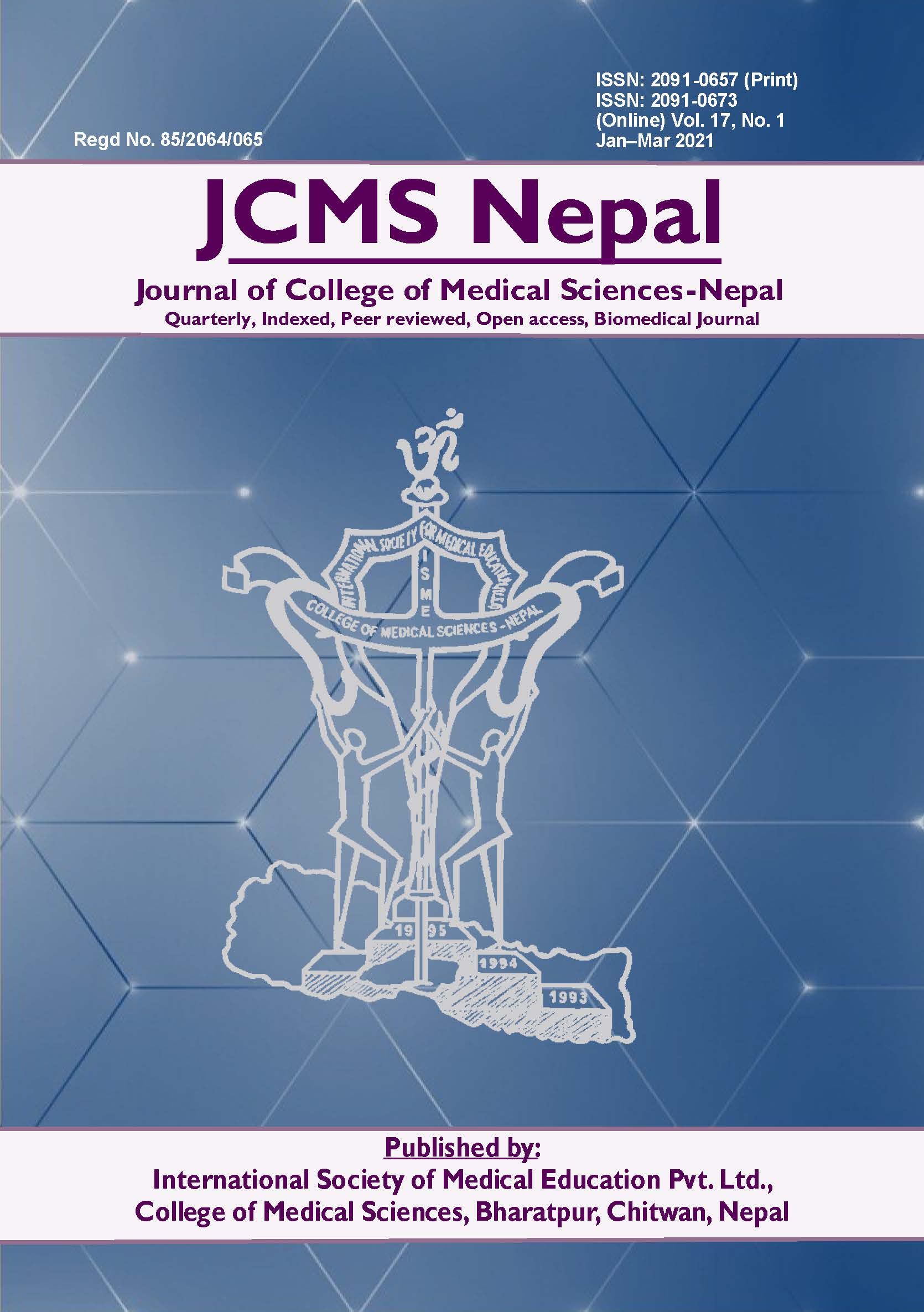Prevalence of High Intensity Zone in Lumbar Spine and its Correlation with Lumbar Disc Degeneration in Patients Attending Tertiary Hospital of Eastern Nepal
DOI:
https://doi.org/10.3126/jcmsn.v17i1.34302Keywords:
Disc degeneration; HIZ; Low Back PainAbstract
Introduction: A high intensity zone (HIZ) in intervertebral disc (IVD) of lumbar spine is a high intensity signal located in the annulus fibrosus of T2-weighted magnetic resonance (MR) imaging. There is limited information on the prevalence of HIZ in lumbar spine in Nepalese population. The aim of this cross-sectional study was to identify the prevalence of HIZ according to the age and its correlation with degenerated disc, disc herniation & bulge and modic changes.
Methods: This was a prospective MR based study in 268 patients (1380 IVD) with LBP, Leg pain or numbness. The prevalence and correlation of HIZ , degenerated disc, disc herniation and bulge and modic change was evaluated in 5 age groups (<20, 20-39, 40-59, 60-79, >80).
Results: The prevalence of HIZ in patients with LBP was 30.5%. Total 1340 IVD were examined out of which122 had HIZ, 742 had degenerated disc, 688 had disc herniation and bulge and 182 had modic changes. Degenerated disc was observed in 95% (116/122) and 51.3% (626/1218) of disc with and without HIZ respectively. Disc herniation and bulge were observed in 98.3% (120/122) and 46.6% (568/1218) of the disc with and without HIZ, respectively. Modic changes were observed in 11.4% (14/122) and 13.7% (168/1218) of disc with and without HIZ respectively.
Conclusions: There was statistically significant correlation between existence of HIZ and degenerated discand disc herniation and bulge, but there was no correlation with the existence of modic changes.
Downloads
Downloads
Published
How to Cite
Issue
Section
License
This license enables reusers to copy and distribute the material in any medium or format in unadapted form only, for noncommercial purposes only, and only so long as attribution is given to the creator.




